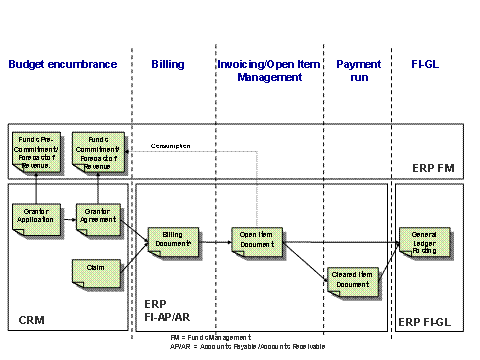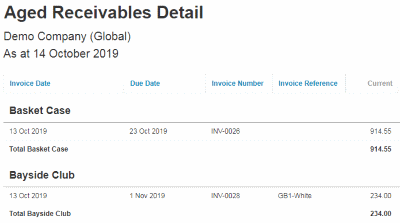Content

You can start by running credit checks on customers before they buy on credit. From there, you’ll want to keep track of customers who continually pay late. If you see a trend, you may want to stop offering them credit options all together. Sometimes, to stay competitive and grow your business, you’ll need to offer credit options to your customers. Offering an online payment option allows your customers an easier and quicker way to pay you. You can enhance this even further by emailing invoices to customers with a link to the payment site.
At some time during the accounts receivable process, you may need to extend that motivation to your customers, to generate faster payments. A crucial part of optimizing accounts receivable processes is to start the process early. All too often, businesses are so intent on making sales that they treat accounts receivable as an afterthought. Starting the process early means discussing things like payment terms in the early stages of the customer relationship. Getting a new customer on board with electronic payments early in the process is another example of taking a proactive approach to the situation. Before doing anything else, then, commit your company to making accounts receivable a priority as early in the process as possible.
Customize your template to include your logo, brand colors, and payment terms. Small field service business owners have a habit of extending credit to customers who aren’t properly qualified. When customers are slow to pay, your cash flow takes the hit. You might not be able to make payroll, or buy essential supplies. This is a last resort option if you have been unsuccessful in collecting payment from a customer after a reasonable period of time. Like many business owners, you may not immediately see the benefits of proactively optimizing your accounts receivable processes.
Typical Accounts Receivable Pitfalls
If the customer is paying at a later point in time or is paying over multiple payments, you issue an invoice.An invoice is not the same as a statement. A statement is sent to a customer with one or several current invoices with the business and specifies the total amount due.
Remember that financial assets are deemed as having economic value, and can be expressed, in accounting terms, as cash. For tax reporting purposes, a general provision for bad debts is not an allowable deduction from profit – a business can only get relief for specific debtors that have gone bad. An example of a common payment term is Net 30 days, which means that payment is due at the end of 30 days from the date of invoice. The debtor is free to pay before the due date; businesses can offer a discount for early payment. Other common payment terms include Net 45, Net 60 and 30 days end of month. The creditor may be able to charge late fees or interest if the amount is not paid by the due date. On the whole, there isn’t a universally applicable figure for a “good” accounts receivable days ratio.
If you are noticing customers who consistently are late or don’t pay, record them. After all, each payment they miss is a direct loss for your small business. These reports can be created in minutes using accounting software like QuickBooks or Xero. You also can create a report manually in a Microsoft Excel spreadsheet. However, the frequency you generate reports is dependent on how many days your customers have to pay you back. For instance, if you give them 30 days, you may want to generate and review an aging report monthly.
This accrual method allows you to record the expense for bad debt in the same month in which you issue invoices. It complies with the matching principle, which state that expenses must be recorded in the same month as the revenues they helped to earn. First, make journal entries to record the sale and the related accounts receivable. Just as you did with the service, you would credit sales and debit accounts receivable. Next, you must record the reduction in inventory that was sold to the customer as the cost of goods sold.
Example Of Accounts Receivable
In order to make payment easier for the customer, you can also set up a direct deposit system where invoiced amounts are automatically deducted from customers’ accounts and sent to you. This is generally easy to set up with your respective banks. Every invoice must also contain specific information that identifies the customer and the goods or services provided. It should also clearly state your name, the name of your business, and the address to which payments should be sent. Prepare a document that explains your requirements and the customer’s obligations.

The asset ledger is the portion of a company’s accounting records that detail the journal entries relating only to the asset section of the balance sheet. Often times, simply getting on the phone with a client and reminding them about a late payment can be enough to get them to pay. Sending email reminders at regular intervals—say, after 15, 30, 45 and 60 days—can also help jog your customers’ memory. One way to get people to pay you sooner is to make it worth their while. Offering them a discount for paying their invoices early—2% off if you pay within 15 days, for example—can get you paid faster and decrease your customer’s costs. When Keith gets your invoice, he’ll record it as an accounts payable in his books, because it’s money he has to pay someone else.
Use our research library below to get actionable, first-hand advice. News Learn how the latest news and information from around the world can impact you and your business. Comparisons Trying to decide between two popular software options? Case Studies & Interviews Learn how real businesses are staying relevant and profitable in a world that faces new challenges every day.
A turnover ratio analysis can be completed to have an expectation when the AR will actually be received. We’ll do one month of your bookkeeping and prepare a set of financial statements for you to keep.
Your credit application form should have a spot where applicants can check or sign to acknowledge that they have read and understand the terms and conditions. The quick ratio or acid test is a calculation that measures a company’s ability to meet its short-term obligations with its most liquid assets. The current ratio is a liquidity ratio that measures a company’s ability to cover its short-term obligations with its current assets. The IRS’s Business Expenses guide provides detailed information about which kinds of bad debt you can write off on your taxes. If you have a good relationship with the late-paying customer, you might consider converting their account receivable into a long-term note. In this situation, you replace the account receivable on your books with a loan that is due in more than 12 months, and which you charge the customer interest for. To record this transaction, you’d first debit “accounts receivable—Keith’s Furniture Inc.” by $500 again to get the receivable back on your books, and credit revenue by $500.
How To Calculate Accounts Receivable Days
If you’re a new business owner, or have recently switched accounting methods from cash to accrual accounting, you may not be familiar with accounts receivable. Accounts receivables are a key part of a company’s financial management practices. It’s the vehicle businesses use to properly track and leverage payments coming into the company. An Accountants Receivable Age Analysis, also known as the Debtors Book is divided in categories for current, 30 days, 60 days, 90 days or longer. The analysis or report is commonly known as an Aged Trial Balance.
This appears as an expense line item on your financial statement. The correct way to account for bad debt is to make an estimate of how many invoices will not be paid and accrue that much each month in journal entries.
Depending on the industry in practice, accounts receivable payments can be received up to 10 – 15 days after the due date has been reached. These types of payment practices are sometimes developed by industry standards, corporate policy, or because of the financial condition of the client. The best way to reduce the amount of time it takes your business to collect outstanding invoices is to optimize accounts receivable. There are many ways to do this, but one of the most effective is to offer ACH debit, which enables you to take payment directly from your customer’s account whenever payment is due.
- An AP clerk manually keys the invoice data into an accounting system before physically storing the paper document in a filing cabinet.
- An invoice that states specific terms such as ‘net 60 days’ is an indication that a sale was made from an account rather than with cash.
- “After all efforts have been exhausted and the customer still hasn’t paid, send a final notice stating that the account will go to collections if that’s what you intend to do,” says Quan.
- You must reply to billing-mistake claims within a specified amount of time.
- You can also send customized payment links through Jobber, so that clients can click-to-pay as soon as they receive the invoice.
Current liabilities are a company’s debts or obligations that are due to be paid to creditors within one year. When it becomes clear that an account receivable won’t get paid by a customer, it has to be written off as abad debt expense or one-time charge. Many businesses use accounts receivable aging schedules to keep taps on the status and well-being of AR accounts. Accounts receivables are created when a company lets a buyer purchase their goods or services on credit. Before deciding whether or not to hire a collector, contact the customer and give them one last chance to make their payment. Collection agencies often take a huge cut of the collectable amount—sometimes as much as 50 percent—and are usually only worth hiring to recover large unpaid bills.
New supplier information is entered using the organization’s naming conventions to avoid duplication. Treasury Department’s Office of Foreign Control list of organizations that are banned from business in the United States. The Purchasing department places the order and transmits a copy of the purchase order to the AP department. The organization receives the goods or services—either through the Receiving department or the employee who ordered them—and the vendor sends the invoice to AP. You can learn more about the entire procure to pay process here. The Officer keys out a payment deposited into the bank account of the supplier, feeds it into the AR system, and then allocates it to an invoice. An invoice is a document provided to the buyer detailing the products and services that have been rendered, the costs of those products and services, as well as the date payment is expected.
How Should Investors Interpret Accounts Receivable Information On A Company’s Balance Sheet?
The company will then decide, based on the credit-worthiness of the applicant, as to whether they will offer goods on credit. The company might choose to offer the credit to individual customers or other businesses. If a company has Receivables, then they’ve made a sale, but have not yet collected the money from the purchaser. Most companies operate by allowing a portion of their sales to be on credit, offering their clients the ability to pay after receiving the service. Normally, companies build up a cash reserve to prepare for situations such as this. Reserves are specific accounting charges that reduce profits each year, approximating anticipated losses.

Find out everything you need to know about the accounts receivable days calculation with our comprehensive guide. Accounts payable are recorded in much the same manner, but in the reverse roles – your company purchases goods or services on credit and increases the ‘accounts payable’. Offering credit to customers is a great way to offer convenience and widen your customer reach. Accounts receivable shows you how much money your customers owe your business. Many times, it’s easier to make a sale on credit rather than having the customer pay up front.
Cash Basis Accounting
The CTO’s team considers any proposals from AP for new technology and determines how to integrate it with the company’s legacy systems. For instance, a customer may request to purchase goods on credit. The AR Manager would require the credit analysts to identify credit-worthiness of the customer.
Most companies operate by allowing a portion of their sales to be on credit. Sometimes, businesses offer this credit to frequent or special customers that receive periodic invoices. The practice allows customers to avoid the hassle of physically making payments as each transaction occurs. In other cases, businesses routinely offer all of their clients the ability to pay after receiving the service.

